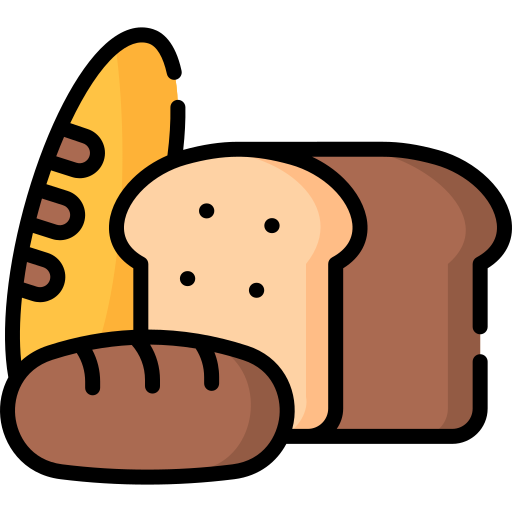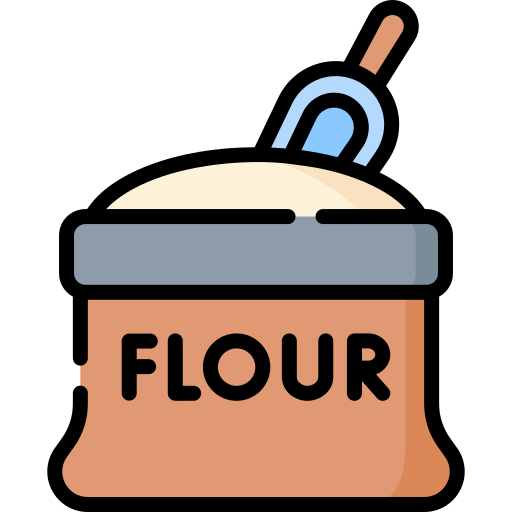
Introduction
Sourdough is possibly the healthiest wheat based bread out there. Instead of adding in yeast, sourdough relies on a starter, growing your own yeast to leaven the bread.This fermented bread has a slightly sour taste, hence the name.

Table of Contents
- Introduction
- The Benefits of Sourdough
- White vs Whole Wheat Flour
- Making the Starter
- Going Forward
- What About the Discard?
- Whole Wheat Sourdough Bread Recipe
- Sources
The Benefits of Sourdough
The fermentation process not only lowers the gylcemic index of the bread, but it also breaks down the gluten, making it more digestible for those with a mild gluten intolerance (though definitely not safe for those with Celiac disease).
Moreover, the production of lactic acid results in antioxidants that help fight off inflamation. Being slightly fermented, sourdough bread acts as a prebiotic, and this may promote healthy digestion.

White vs Whole Wheat Flour
My main problem with most sourdough breads is that they're made out of white flour. White flour just contains the empty starchy endosperm of the wheat grain, and none of the bran or germ. The bran contains the fiber, and the germ has healthy fats, B vitamins, and vitamin E. This means that white flour has none of the fiber, vitamins, or minerals found in the whole wheat kernel. So instead, here I will go through a week long guide to create your own sourdough starter out of whole wheat flour.

Making the Starter
Day 1
- 1 cup (120 g) Whole Wheat Flour
- 1 cup (240 g) Water
The whole processes of creating your starter will take about 1 week. On day 1, mix together 1 cup each of whole wheat flour (120 g) and water (240 g) in a large glass bowl. Combine with a silicone spatula, and cover with clean towel. Let rest on the counter for 24 hours.
Note: it may help to note down the empty weight of your container, that way you know exactly how much your sourdough weighs each day.
Day 2
Discard half of the mixture, then repeat the day 1 step. Mix in each 1 cup of whole wheat flour (120 g) and water (240 g). Cover with the towel, and let rest on the counter for another 24 hours.
Days 3-5
For days 3, 4, and 5, repeat the steps of day 2. Discard half the mix, add in the flour and water, mix, cover, and let sit on the counter for 24 hours.
Days 6-7
Do the same as days 2-5, except you should now feed the sourdough ever 12 hours, instead of every 24 hours.
Day 8
After a week, you should start seeing some signs of activity in your homemade starter. Things to look for include bubble foam on the top, bubbling throughout the mix, and if the mix roughly doubled in size.
What About the Discard?
On days 2-7, you will be discarding half of your mix each day. This is known as your "discard", and can be used in recipes. I don't personally have any recommendations, but you can Google recipes with sourdough discard if you're interested.
Going Forward
From here in out, your sourdough starter is good to use in bread, or any other recipes you can think of. Store leftover starter in an airtight jar the fridge, and feed once a week with a cup of flour and a cup of water.
You can also store the starter on the counter for more immediate use. Cover with a towel instead of a tight lid, and feed every 12 to 24 hours.
Whole Wheat Sourdough Bread Recipe
As sourdough takes some good timing, I will lorovide approximate times of the day to perform each step so it's easier to follow along.
Monday - 8:00 pm
12 hours before making your bread, make sure to feed your starter, and let rest on the counter for 12 hours, covered with a clean towel. Tuesday - 8:15 am
- 4 cup (475 g) Whole wheat flour
- 1.33 cup (325 g) Water
- 1/3 cup (100 g) Starter
- 5 tsp (10 g) Salt
In a large bowl, combine together flour, water, starter, and salt with a dough scraper or your hands. Combine for about 5 minutes.
Tuesday - 8:30 am
Cover the bowl with a damp, clean towel. Let rest on the counter for 1 hour.
Tuesday - 9:30 am
Now we're up to the stretch and fold step. Lift up one side of the dough about 6 inches, and fold over to the other side. Rotate the bowl 90 degrees, and repeat a total of 4 times.
Tuesday - 9:45 am
Repeat the stretch and fold step, and wait 15 minutes.
Tuesday - 10:00 am
Repeat the stretch and fold step, and wait 15 minutes.
Tuesday - 10:15 am
Repeat the stretch and fold step, and wait 15 minutes.
Tuesday - 10:30 am
Repeat the stretch and fold step, and wait 30 minutes.
Tuesday - 11:00 am
Repeat the stretch and fold step, and wait 30 minutes.
Tuesday - 11:30 am
Repeat the stretch and fold step, and wait 30 minutes.
Tuesday - 12:00 pm
After all the stretching and folding is done, cover your bowl with either plastic wrap or a lid. Let the dough ferment in a warm place until roughly doubled. For me, this means placing the dough I the microwave, and letting it rest for 8 hours.
Tuesday - 8:00 pm
Invert your dough onto a clean countertop, and shape into a tight ball by gently spinning towards you. For a more detailed guide, I will link some video sources at the end of the post. Let the dough rest (uncovered) for 15 minutes.
Tuesday - 8:30 pm
Shape the dough again into a ball. Lightly flour your bowl, and add the dough back to the bowl. Cover with plastic wrap or a lid, and refrigerate for 12-24 hours. You can also let it rise in the microwave again for 2-4 hours.
Wednesday - 8:30 am
Place a large Dutch oven in the oven, and set the temperature to 500F.
Wednesday - 9:00 am
When the oven is preheated, remove the dough from the bowl, inverting it onto a piece of parchment paper or silicone bread sling.
Wednesday - 9:05 am
Score the top with a razor blade, and dust the top of the dough with flour.
Wednesday - 9:10 am
Carefully place the parchment paper (or bread sling) into the Dutch oven.
Wednesday - 9:15 am
Cover with a lid, and bake for 20 minutes. Remove the lid, and bake for an additional 20 minutes.
Wednesday - 10:00 am
Remove the bread from the oven, and transfer to the fridge (uncovered) to cool.
Wednesday - 12:00 pm
Allow the bread to cook completely (at least 2 hours) before slicing. Store leftover slices in an airtight bag in the freezer.
Sources